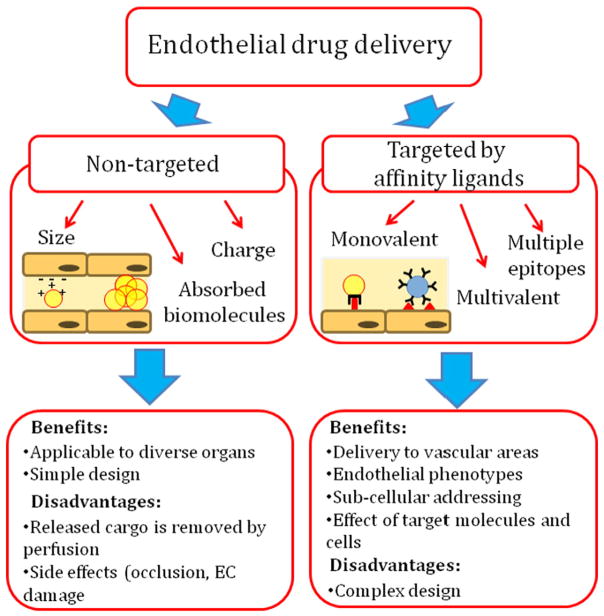Fig. 2.
‘Passive’ vs. ‘active’ delivery of nanomedicine agents to vascular endothelium. Passive delivery relies on mechanisms bypassing affinity interaction with defined molecules. They include adhesion and uptake in the vessels due to size, charge, rigidity, or amphiphilic features of the carrier itself, carrier agglomerates, or carrier-adsorbing intermediary molecules in blood. Affinity targeting is provided by ligands that can be conjugated to the DDS surface in molecular configurations permitting diverse modes of specific anchoring of DDS onto the target surface and subsequent cellular uptake.

